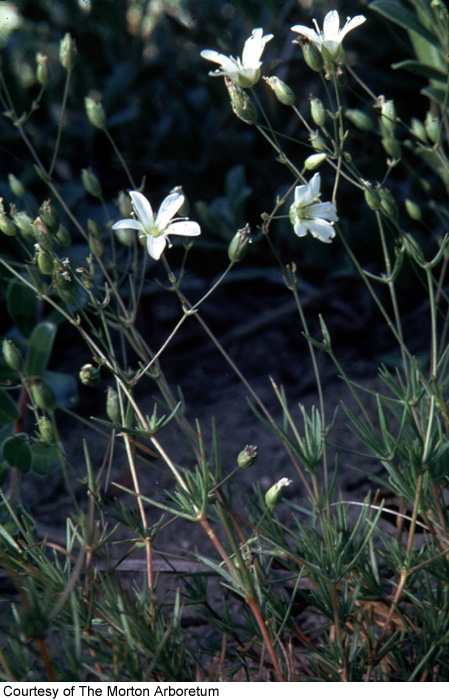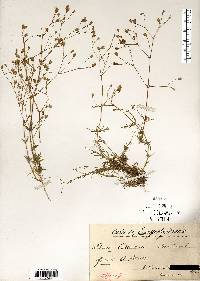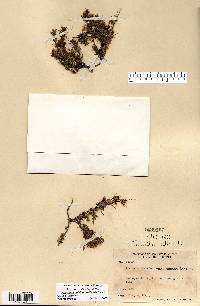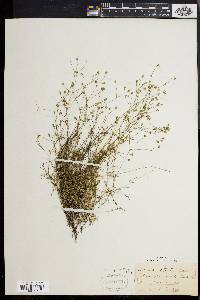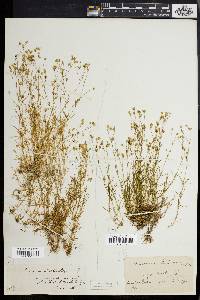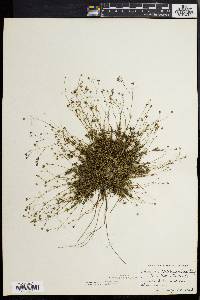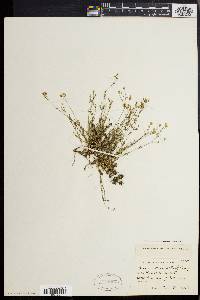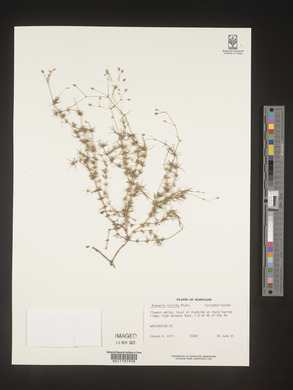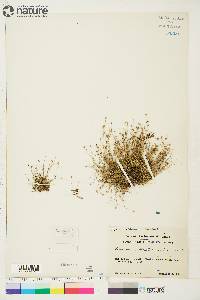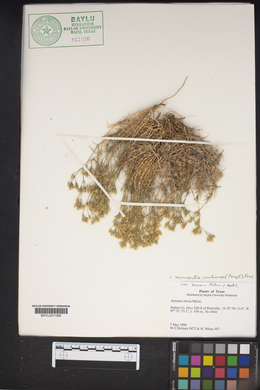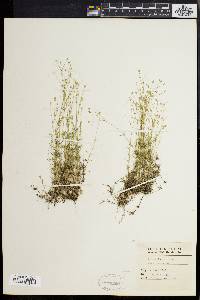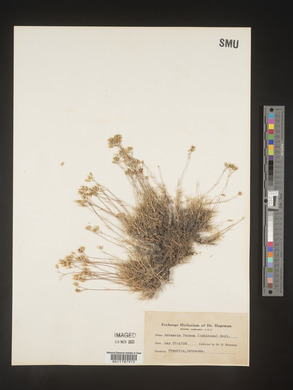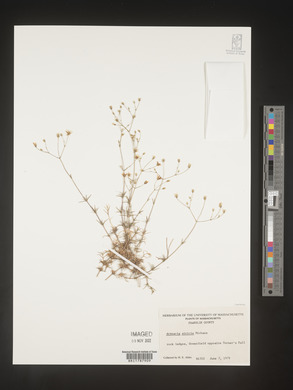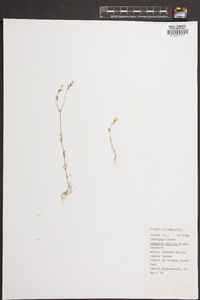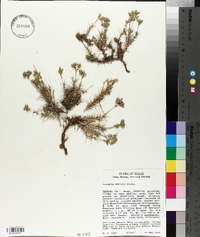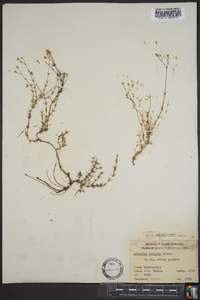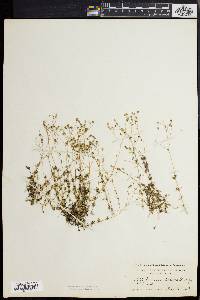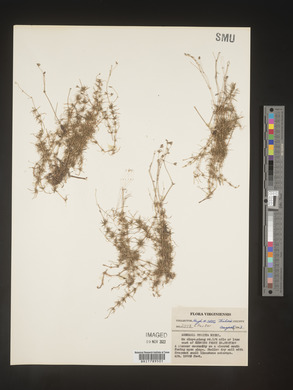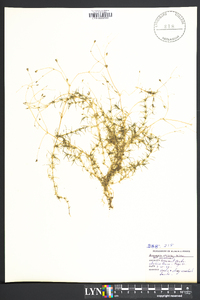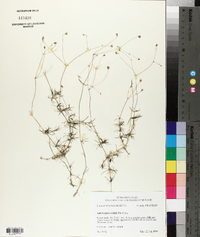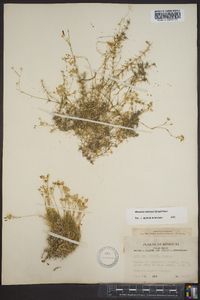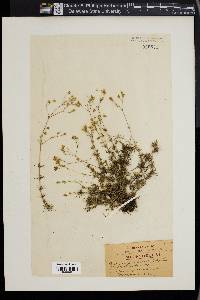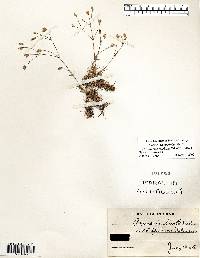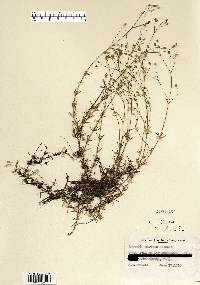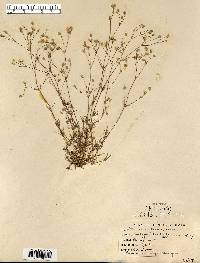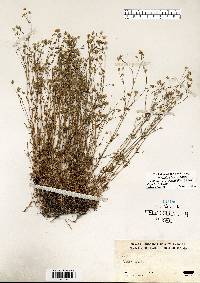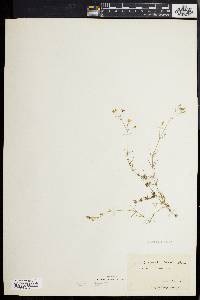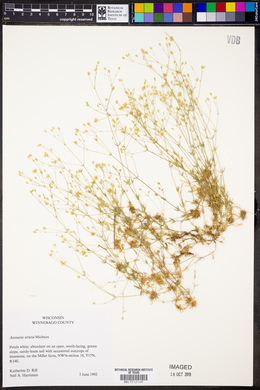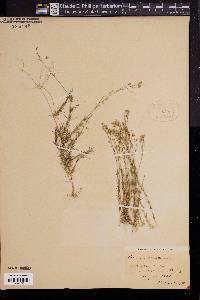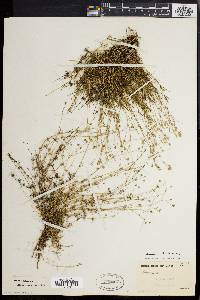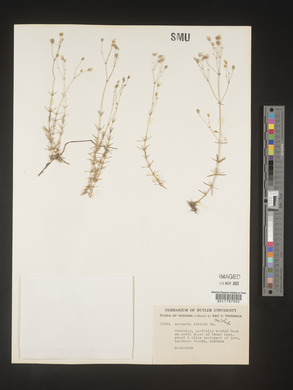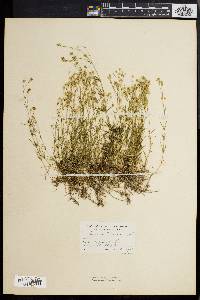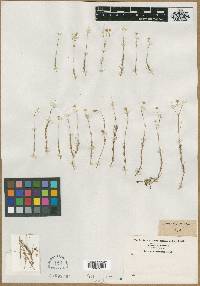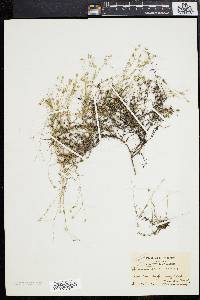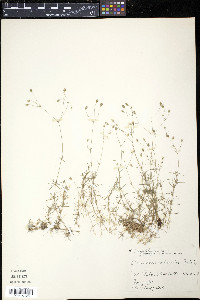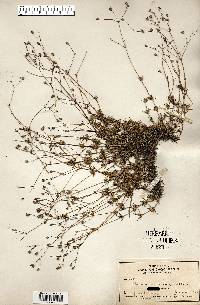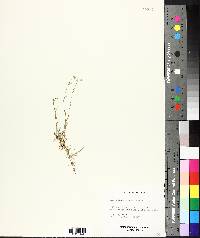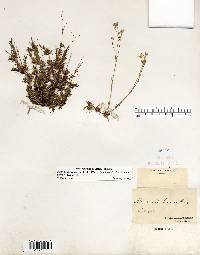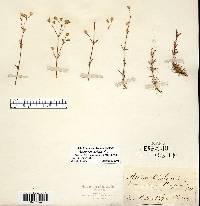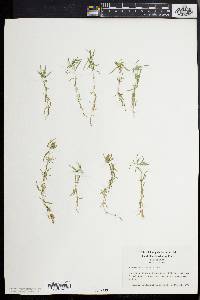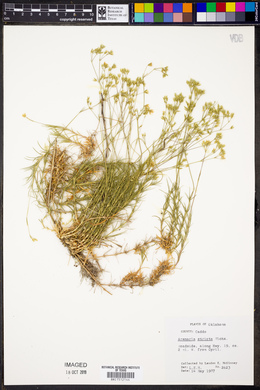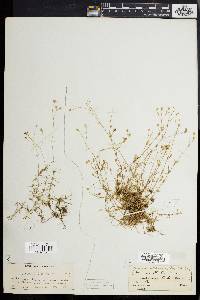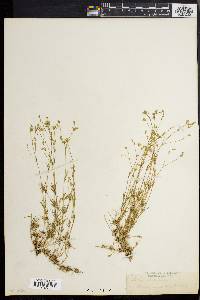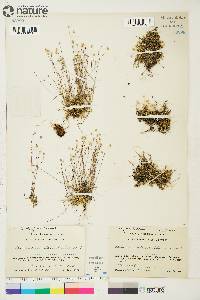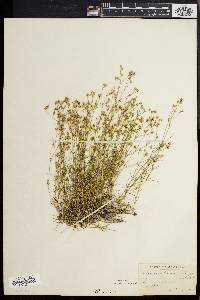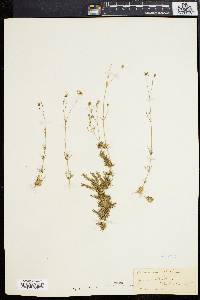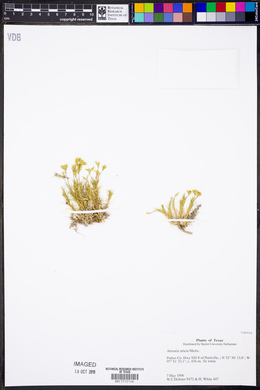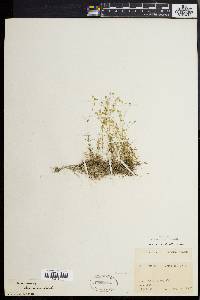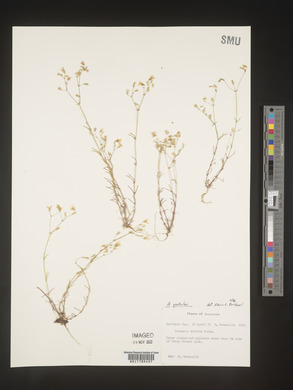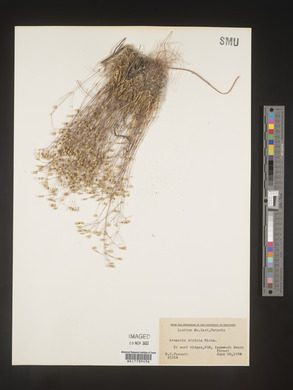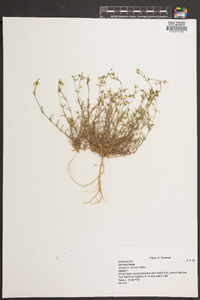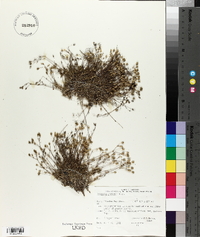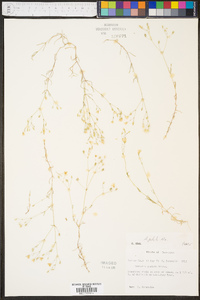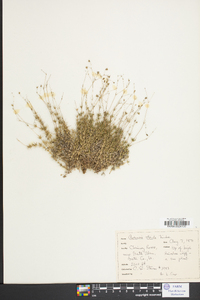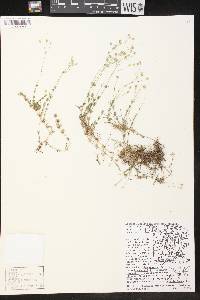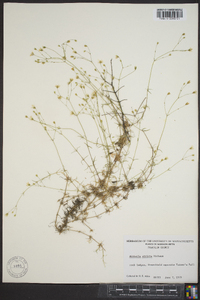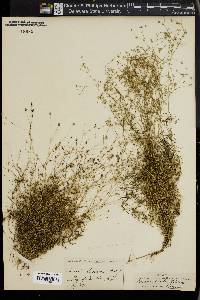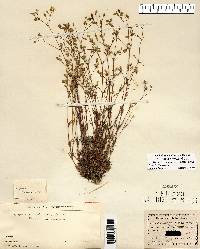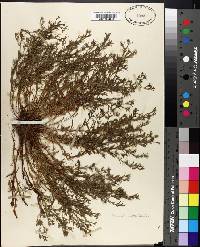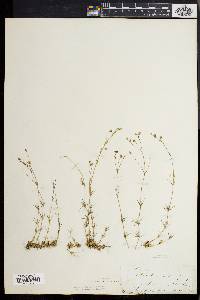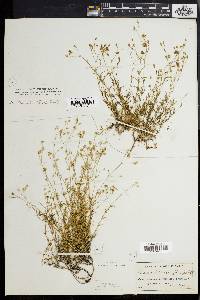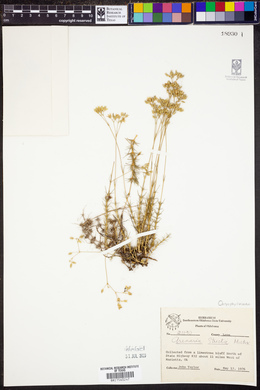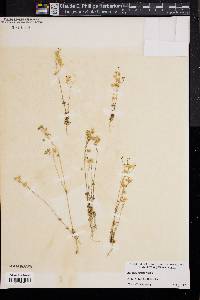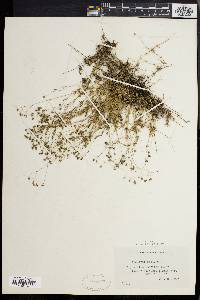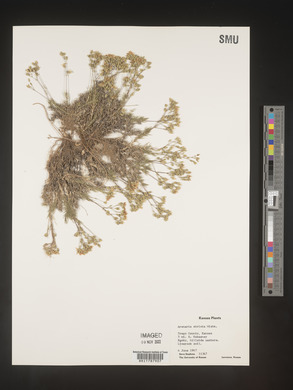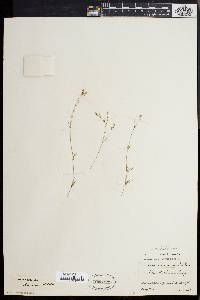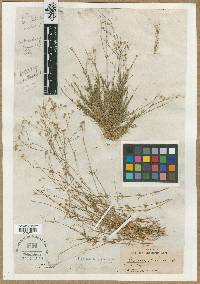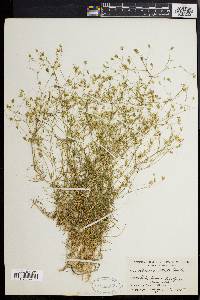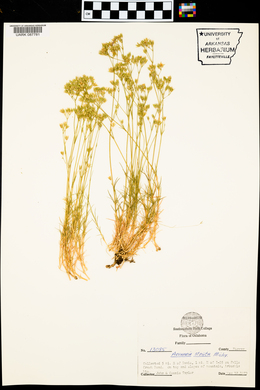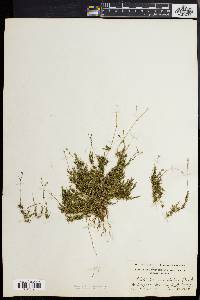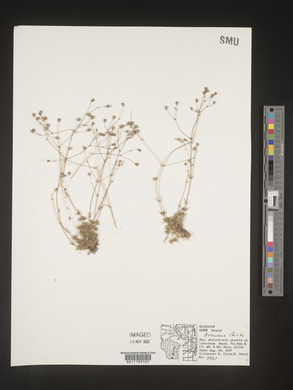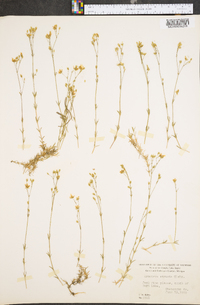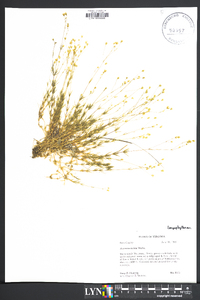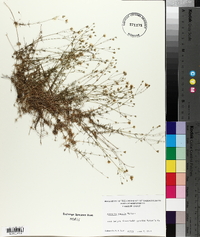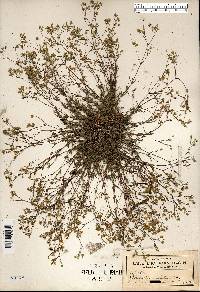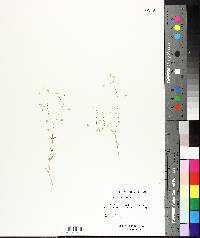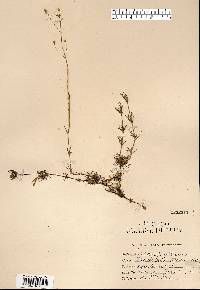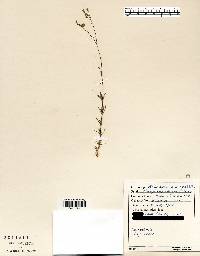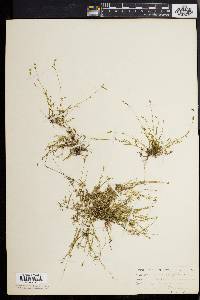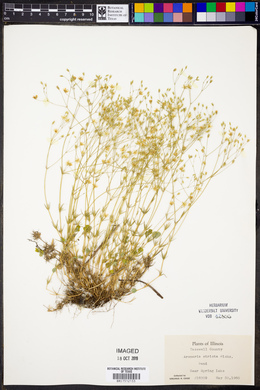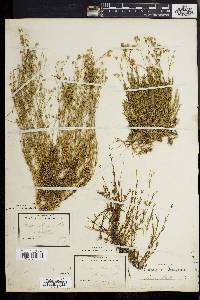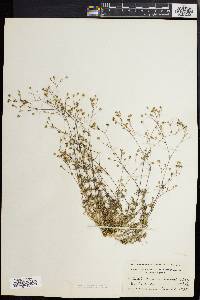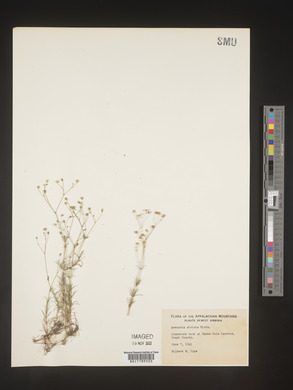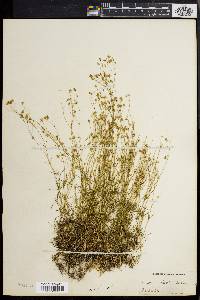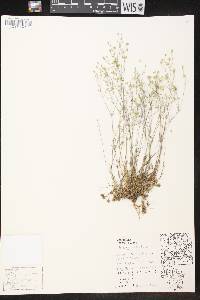
|
|
|
|
Family: Caryophyllaceae
|
Annual or perennial herb with a taproot 10 - 40 cm tall Stem: upright or decumbent, leafy, sometimes hairy. Commonly having short, leafy, sterile axillary shoots. Leaves: opposite (appearing whorled due to overlapping), stalkless, 8 mm - 3 cm long, 0.5 - 2 mm wide, linear to bristle-like, mostly flat, three-veined, rigid. Inflorescence: an open, branched cluster (cyme) of five to fifty flowers. Flowers: white. Stalk 0.5 - 2 cm long, slender. Stamens ten. Styles three. Sepals: five, 3.5 - 6.5 mm long, broadly lance-shaped with a pointed tip, three-veined, with rough margins. Petals: five, white, 5 - 8 mm long (longer than the sepals), oblong to reverse egg-shaped with a rounded tip. Fruit: a dehiscent capsule (opening by six teeth), stalked, 3 - 4 mm long, elliptical. Seeds brownish black, kidney-shaped. Similar species: The linear to thread-shaped leaves (usually under 2 mm wide) help distinguish this species and Arenaria patula from all other Arenaria in the Chicago Region. Arenaria patula differs by having fleshy, linear to thread-shaped leaves and hairy inflorescence branches. Flowering: mid-May to late July Habitat and ecology: Uncommon in the Chicago Region due to its habitats, which are quite limited in extent and occurrence. These habitats include low sand ridges near Lake Michigan, dry, gravelly hill prairies, and limestone glades. Occurence in the Chicago region: native Etymology: Arenaria comes from the Latin word arena, meaning sand, referring to the fact that most species in this genus prefer sandy habitats. Stricta means erect or upright. Author: The Morton Arboretum Diffuse annual or perennial, glabrous or sometimes hairy, commonly with numerous short sterile shoots on prostrate branches; stems 1-4 dm, decumbent or erect, leafy for one-third to two-thirds their length, usually with short, leafy, fascicle-like sterile axillary shoots; primary lvs 8-30 mm, subulate-setaceous, somewhat involute, 3-nerved; infl open, often extending to the middle of the stem; pedicels slender, 5-20 mm; sep 3.5-6.5 mm, broadly lanceolate, acute, scarious-margined, (1)3- nerved; pet 5-8 mm, entire; fr equaling or a little longer than the sep, the 3 valves dehiscent to the middle or beyond; seed 0.8-1.5 mm, brown-black, low-tuberculate; 2n=22-30. Rocky or gravelly, often calcareous soil. (Minuartia s.) Var. stricta, perennial or annual, mostly lax and diffuse, the lvs mostly 1.5-3 cm and the stem leafy to above the middle, the pet usually longer than the sep, is common and variable in our range, from s. Ont. and N.Y. to Minn., s. to Va. and Ark. June-July. Var. litorea (Fernald) B. Boivin, often cespitose, leafy below the middle, the lvs 5-15 mm, and the pet equaling or mostly shorter than the sep, occurs from Nf. to Minn. and Alas. and B.C. July-Sept. (A. litorea; A. dawsonensis; Sabulina d.) Var. texana B. L. Rob., rigidly cespitose, usually only the lower third of the 5-20 cm stem leafy, the lvs 5-20 mm, the pet usually longer than the rigid sep, occurs from Mo. to Neb. and Tex., and reputedly e. to O. Gleason, Henry A. & Cronquist, Arthur J. 1991. Manual of vascular plants of northeastern United States and adjacent Canada. lxxv + 910 pp. ©The New York Botanical Garden. All rights reserved. Used by permission. |

